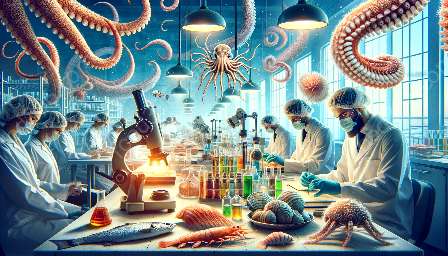In today's world, seafood quality is a topic of increasing importance as consumers are becoming more conscious about the provenance and quality of the seafood they consume. This article delves into the dynamics of consumer preferences and market trends in seafood quality, while also examining the crucial aspects of seafood quality control and assessment, all within the realm of seafood science.
Understanding Consumer Preferences
Consumer preferences in the seafood industry are influenced by various factors, including taste, texture, appearance, health considerations, and sustainability. Knowing and understanding these preferences is crucial for businesses in the industry to cater to their target consumers effectively.
Taste and Texture
Seafood consumers often seek fresh, high-quality products that offer a delightful taste and pleasing texture. Preferences for specific flavors and textures vary across different regions and cultures. For example, some consumers may prefer delicate, flaky fish, while others may favor richer, meatier seafood varieties.
Appearance and Presentation
Visual appeal plays a significant role in consumer choices. Consumers are drawn to seafood products that exhibit freshness, vibrant colors, and an overall appealing presentation. In today's market, consumers are increasingly attracted to seafood products that are aesthetically pleasing and well-packaged, indicating quality and attention to detail.
Health and Sustainability
Another critical aspect of consumer preferences in the seafood industry pertains to health and sustainability. Consumers are increasingly mindful of the health benefits derived from consuming seafood, such as omega-3 fatty acids and essential nutrients. Moreover, sustainability considerations have gained prominence, with consumers favoring ethical and environmentally responsible seafood sources and distribution practices.
Market Trends in Seafood Quality
The seafood industry is subject to various market trends that significantly influence the quality and availability of seafood products. Understanding and adapting to these trends are essential for businesses to remain competitive and meet evolving consumer demands.
Globalization and Supply Chain Dynamics
Globalization has transformed the seafood market, leading to an increasingly interconnected supply chain. This has resulted in both opportunities and challenges in ensuring the quality and traceability of seafood products throughout the supply chain. Market trends show a growing demand for transparency and traceability, particularly concerning the origins and handling of seafood products.
Emerging Technologies and Innovation
Technological advances and innovation have reshaped the seafood industry, offering new methods for quality assessment, preservation, and distribution. From advanced packaging solutions to blockchain-based traceability systems, businesses are leveraging technology to enhance the quality and safety of seafood products while meeting consumer expectations.
Changing Consumer Behavior
Consumer behavior in the seafood market is continuously evolving, influenced by various factors such as lifestyle changes, dietary trends, and health awareness. This dynamic landscape requires businesses to adapt their offerings to align with shifting consumer preferences, including a focus on organic, responsibly sourced, and value-added seafood products.
Seafood Quality Control and Assessment
Seafood quality control and assessment are integral components of ensuring that consumers receive safe, high-quality seafood products. Rigorous measures and standards are essential to maintain the integrity of seafood throughout the supply chain.
Regulatory Standards and Compliance
Adherence to stringent regulatory standards is paramount in the seafood industry. This includes compliance with government regulations related to food safety, hygiene, labeling, and traceability. Businesses must continuously monitor and verify their processes to ensure conformity with these standards.
Quality Assurance Practices
Implementing robust quality assurance practices is essential for maintaining high standards in seafood production. This includes methods for assessing freshness, handling, processing, and storage, as well as establishing quality benchmarks for different seafood products.
Traceability and Documentation
Traceability systems play a crucial role in seafood quality control, enabling the tracking of products from their source to the consumer. Accurate documentation and transparency in the supply chain facilitate rapid response to quality issues and recalls, bolstering consumer confidence in the seafood they purchase.
Understanding Seafood Science
Seafood science encompasses a range of disciplines focused on the study and enhancement of seafood quality, safety, and sustainability. This multidisciplinary approach integrates scientific principles with industry practices to continually improve seafood products and processes.
Food Safety and Preservation
Advancements in seafood science contribute to enhancing food safety measures and preservation techniques, ultimately ensuring that seafood products reach consumers in optimal condition while adhering to strict safety standards.
Nutritional Analysis and Labeling
Seafood science facilitates the analysis of nutritional content in seafood products, informing accurate and informative labeling that helps consumers make informed dietary choices. Understanding the nutritional value of seafood products is essential for promoting their health benefits.
Sustainable Practices and Environmental Impact
The integration of seafood science with sustainability practices is crucial for mitigating the environmental impact of seafood production and consumption. Researchers and industry professionals collaborate to develop sustainable fishing methods, aquaculture practices, and resource management strategies.

